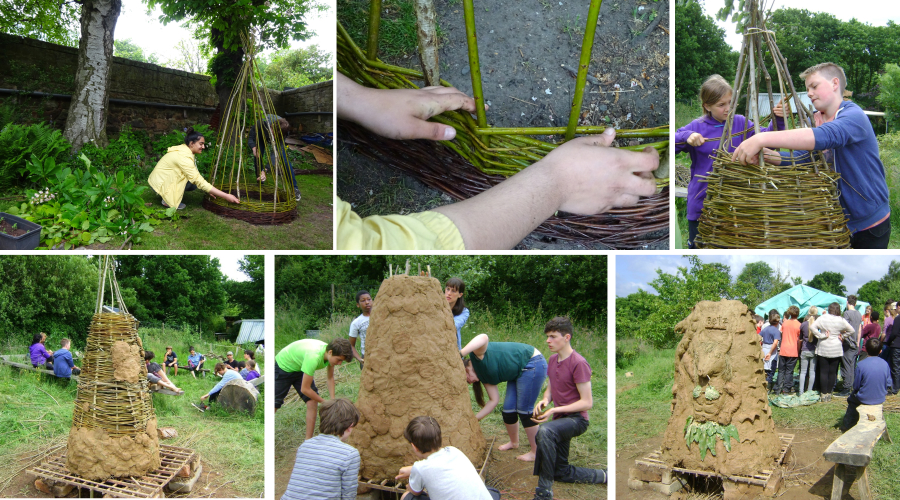Lime Kiln Process Excursion
26 - 30 May 2025

Class 7 head to Garvald Home Farm for their staple week of building a lime kiln and wild camping, taking their Main Lesson in Chemistry outside.
The primitive kiln demonstrates the archetypal chemical process of transforming calcium carbonate into quicklime. The experiment requires that calcium carbonate (substances such as limestone, marble, sea shells, & chalk) is burned in a kiln where the temperature reaches above 1000°C.
Limestone is a unique mineral because it’s derived from the animal kingdom, and the process of burning it is very similar to those used to make lime mortar – a building material, and lime milk – used in fresco paintings. The use of lime-based mortars have become increasing important in building conservation, as their environmental credentials are far higher than cement, as they actually absorb C02 from the atmosphere, whereas cement gives off more than it absorbs.
Depending on the weather, the pupils build one of two chimneys, namely the Wattle and Daub or the Brick chimney.

Working together to create a basket weaved from sticks to create a chimney, the pupils then head to the Pentlands to dig clay in order to create a batch of cob mixture, with straw and sand to build a primitive lime kiln. Using the wattle and daub composite building method, the wattle (woven basket) is daubed with the sticky material (cob mixture). Wattle and daub has been used for at least 6,000 years and is still an important construction method in many parts of the world. Many historic buildings include wattle and daub construction, and the technique is becoming popular again in more developed areas as a low-impact sustainable building technique.
Traditionally, the scientific method is taught by the teacher or the text book, wherein a hypothesis is presented and the students are told to prove it. This method is linear, has predicted results, and does not stimulate everyone. Physicist Victor Weisskopf objected to this sterile approach when he said:
Science is not flat knowledge, formulae, names. It is curiosity, discovering things, and asking why. . . . We must always begin by asking questions, not by giving answers.
You can teach only by creating interest, by creating an urge to know”
Building on their experience of making the lime kiln, in 2019 the teenagers came back to campus to work together to make a pizza oven that the Class then used throughout the next academic year to fund-raise for their Class 8 foreign exchange. Subsequent Class 8’s continue to benefit, using it for their Pizza Project, which raises thousands each year.

The desired shape of the oven is created with sand. Next, a mixture of sand and clay, combined using bare feet, is moulded into similar-sized bricks, and built up around the sand shape to create the walls. This process ensures the thickness is even throughout, so as to avoid weak points. Whilst still wet the blocks are then smoothed together. Once the first layer is on, a second round is undertaken, this time adding straw to the sand and clay material. The class complete the process by adding a layer of lime plaster to the structure.

Pizza Project by Class 8, creating and maintaining the fire, preparing, cooking and selling the clay-baked organic pizzas to Kindergarteners every Thursday lunchtime.
Lower School Main Lesson Programme can be viewed here
Of relevance…
NEWS: Edinburgh Steiner School Commended For Conservation in Curriculum
